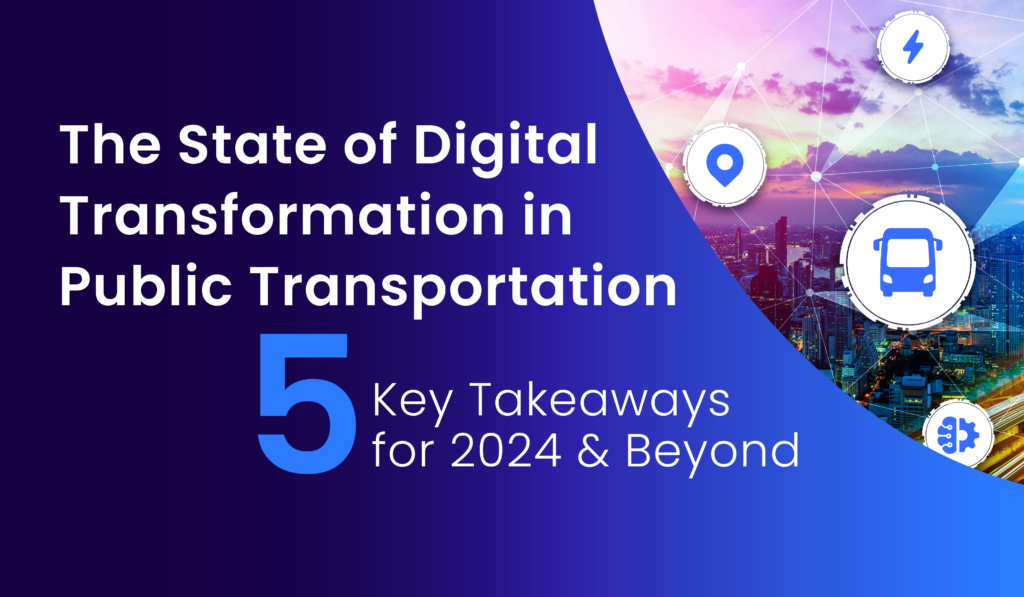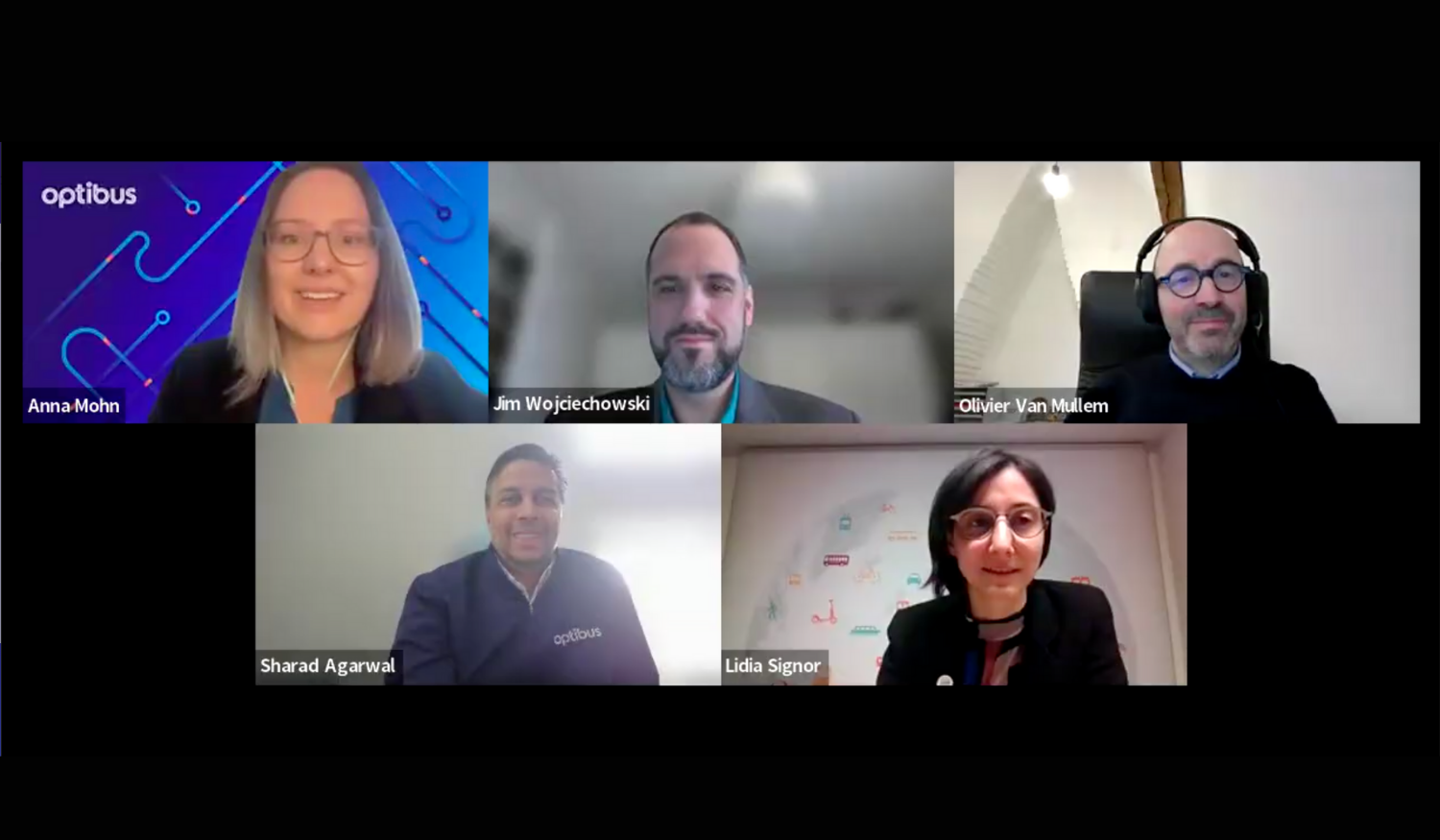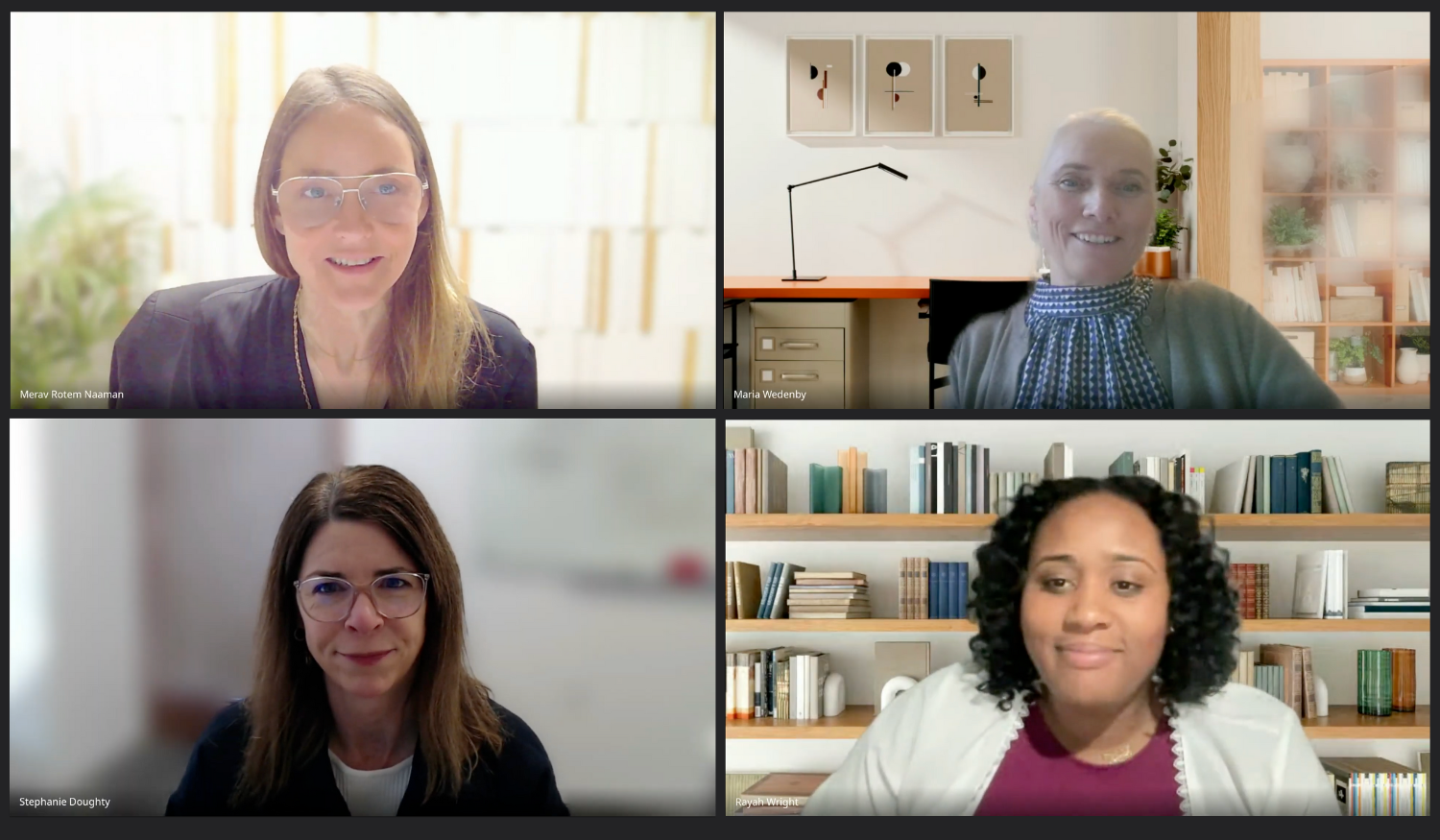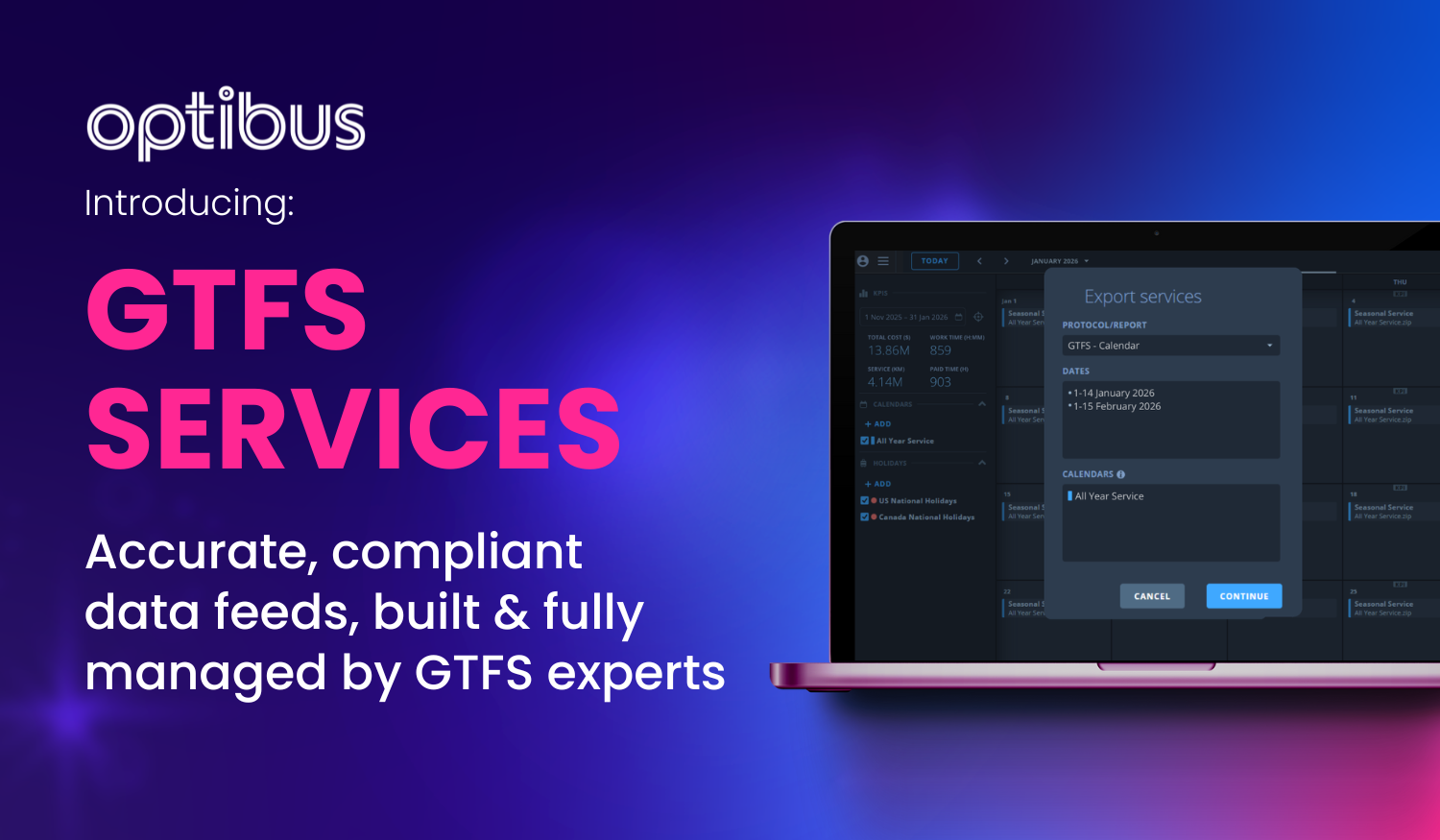New paradigms in public transportation require new ways of thinking and new approaches to diverse challenges that span driver shortages, transportation inequity, vehicle electrification, fuel shortages and evolving ridership needs.
To highlight solutions for how we can deal with the current challenges, we designed a webinar series in which senior public transportation executives discuss their approaches. We started with the kick off event in March. The webinars on the individual topic blocks provide deeper insights - catch the next webinar on driver shortages on June 8th!
The change we need to make
In our kick off webinar on March 31, 2022, we discussed with industry leaders from North America and Europe what the biggest industry challenges are and, above all, what solutions could look like. The panelists offered suggestions about how operators, agencies, and cities can approach these critical issues.
The panel of experts included:
- Judy Rodriguez, Director of Transportation, Western Reserve Transit Authority (WRTA)
- Sergio Soares, CEO, Transdev Portugal & Spain
- Carla Stockton, Jones, UK Managing Director, Stagecoach
- Dave Joshua, General Manager, EMEA, Optibus
- Crissy Ditmore, Head of Public Policy, Optibus
Our panel of industry professionals discussed what the industry should leave behind, and what we should adopt, in order to improve driver work conditions and reduce absenteeism. The main suggestions were:
- Address driver fatigue
- Facilitate training and education
- Leave behind signing bonuses
- Offer new types of work shifts
- Cater to younger recruits
The ideas were diverse, but the message is clear: resolving driver shortages is an industry-wide effort that will require agencies and operators to address larger, systemic problems and the nature of driving jobs themselves.
Now, we revisit the topic and discuss it more deeply. Because, as Carla Stockton-Jones, UK Managing Director, Stagecoach, noted, "How we take care of our drivers is how we present ourselves as a company - and as an industry."
Join us for Part II of this discussion “Increasing Driver Satisfaction: Why a New Approach is Needed” where industry leaders from North America and Europe will delve deeper into this topic during a fast paced, interactive webinar.
The panel will feature:
- Carry Buchholz, GM and Managing Partner of LVL Jäger
- Sergio Soares, CEO, Transdev Portugal & Spain
- Elizabeth Stayner, Senior Transit Planning Manager at MV Transportation
- Dave Joshua, GM EMEA, Optibus
- Crissy Ditmore, Head of Public Policy, Optibus
DATE: Wednesday June 8th
TIME: 11.30 am EDT / 3.30 pm GMT
Below we have summarized some of the key discussion points and insights from the first part of our webinar series for you!
Driver shortages
The shortage of drivers is a major concern for the industry, especially in Western countries. For two-thirds of the kick off webinar’s audience, it is today’s most significant challenge. An aging workforce, the pandemic, driver fatigue, a need for more flexible schedules, coupled with competition from delivery services and higher paying jobs from other types of transportation providers, such as long haul trucking, are exacerbating the problem. How can the public transport industry distinguish their driver jobs from those of other sectors? Is money the main incentive for drivers? These questions were discussed in the webinar.
“Higher pay alone won't solve the problem," was one of the key answers from Sergio Soares, CEO of Transdev, Portugal and Spain. “We have an aging population and a generation gap.”
“Younger people are not available or not excited to have a driver career. The extended working periods and not being able to predict what daily life is going to be is a huge problem. In recent years, the working conditions of drivers have not increased enough. So there’s work to do,” Sergio sums it up.
Don't miss the second part of the webinar series, which will go into more depth on the topic of driver shortages!
Vehicle electrification and fuel shortages
The transition to low and zero-emissions vehicles (ZEVs) is another important challenge the industry is facing. ZEVs are central to reducing emissions. Rising fuel prices gives society another reason to make the switch quickly. Yet in many places, ZEVs still comprise the minority of the fleet. The question the panel discussed was: What is holding us back from going electric, faster?
Judy Rodriguez, Director of Transportation at the Western Reserve Transit Authority (WRTA), considers budget and charging facilities to be the biggest obstacle.
Sergio Soares agreed, saying, “Yes, it’s a challenge; it’s an economic challenge, and we all face it.” He notes other challenges as equally important: “Electric vehicles have challenges in terms of operations. They don’t have the same autonomy. They need infrastructures that are not there yet.”
All panelists agreed that battery life is an important part of the challenge. Carla Stockton-Jones, UK Managing Director, Stagecoach, summed it up: “We’ve had a business model, where almost to the day you can predict the life cycle of your fleet, and you can’t do that now. It’s all such new technology, and it’s ever-evolving.”
We asked the kick off webinar audience what has been their biggest obstacle to deploying ZEVs. Their answers echoed the opinions of the panelists:
- budget (cost of electricity / lack of capital)
- availability of charging facilities
- a solution to operate ZEVs
- change management
- supply chain of vehicles
- poor quality of the purchased vehicles
Despite the challenges, all panelists agreed that electric fleets are the future.
Judy said: “We ordered one bus, but we want to eventually go the whole way with our fleet. I think electric is the best way to go.”
Carla Stockton-Jones agreed: “Modal shift is the biggest opportunity that we’ve got to meet our net-zero targets”.
Carla stressed the role of collaboration in achieving these milestones: “I think what’s really key is we can’t do this alone. If we try to do this alone, it will take too long for us to do it. I think we have to work collaboratively; operators, local authorities, national governments.”
She notes that collaboration is crucial throughout all steps of the transition, from funding to information to infrastructure development: “Prioritizing grid infrastructure upgrades gives us significant social and community impact, and I think that if we can collaboratively work within our communities to then share that infrastructure, we all get there quicker.”
What else will help us move forward quickly with electrification and zero emissions fleets? Click here to receive updates about our next webinar on the topic, featuring industry leaders from around the globe.
Transportation inequity and evolving ridership needs
When people hop off the bus and into their cars, we lose potential riders and the fight against climate change and congestion. In the webinar, the panel discussed: Are we further ahead, or behind, where we were at this point last year in terms of increasing ridership?
Sergio Soares, CEO of Transdev, Portugal and Spain, gave a split answer to this question: “I’m pretty positive about ridership. There are people who have environmental motivation. There is and always has been economic motivation as well. What is lacking, in my opinion, is the offer. In my country, aside from the main metropolitan areas, the offer in transport is lousy. It’s not adapted at all to the needs of the population. So what we have to do is to have a conversation about where the people are, where the people go, and propose to them offers that require an initiative to start it out, because the passengers are not there, but the people are there. And we know where the people are moving around, because we have data. There is no excuse, and the motivation and the incentives are there.”
Judy reported that her agency has seen an uptick in ridership since making all their services, including fixed-route and demand-responsive, free of charge. “A lot of people that get on the bus say, ‘This is the first time I’m using it, because it’s free and I just want to try it because the gas is so high now, too,’” Judy elaborated.
Communication about services has also helped attract passengers: “We go to a lot of senior centers, we go to stores and ask, ‘Can we just post our schedules here? Do your employers use the transit service? It’s free. We can offer travel training. We’ll have someone go to your house, walk with you and show you every step of the way,’” Judy explained.
Breaking down barriers and making it easy for people to use the bus is also a very important factor for Carla when it comes to attracting new passengers: “We need to make it easy for people to choose to travel by bus. We need to go faster on that. We need bus travel to be as easy as booking an Uber, simple as that.”
To make sure you'll be live at the next discussion and can bring your questions and suggestions directly, register now for our upcoming webinar








%20(2).png)